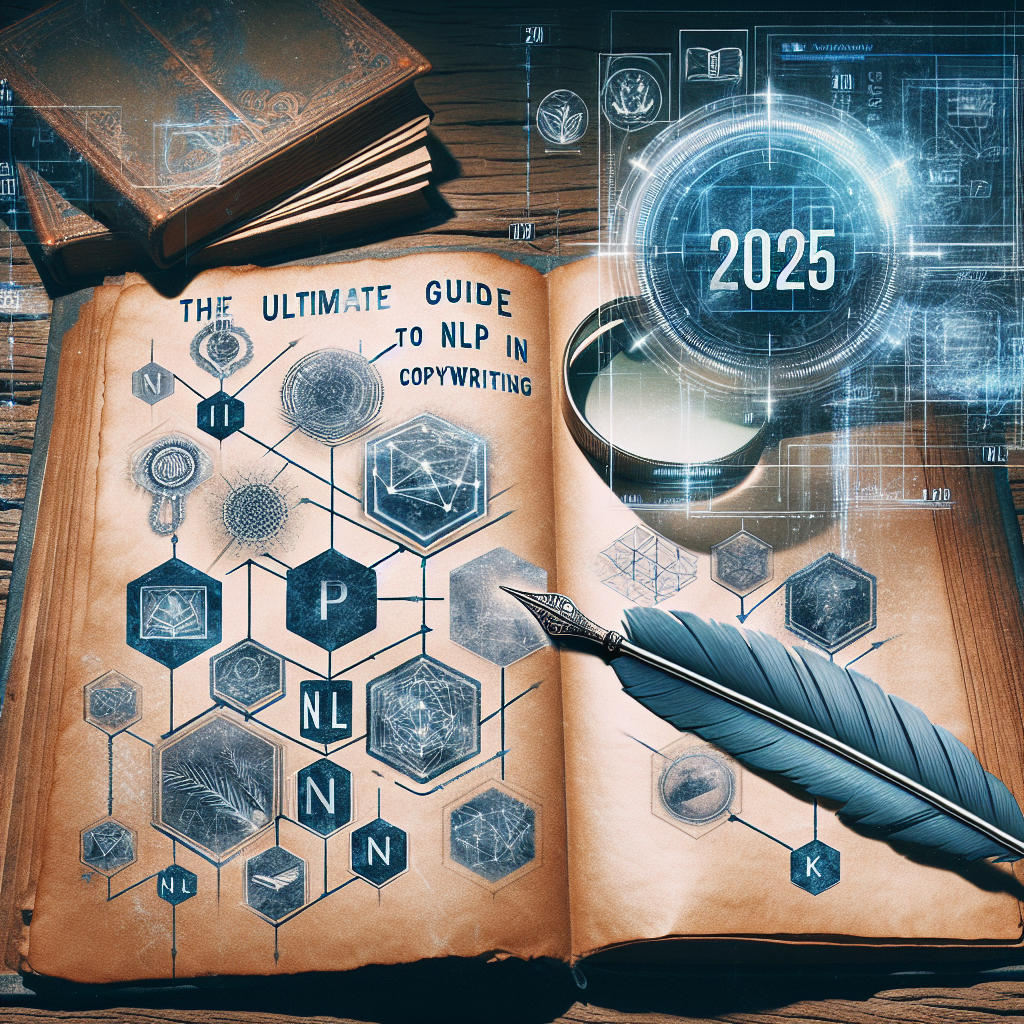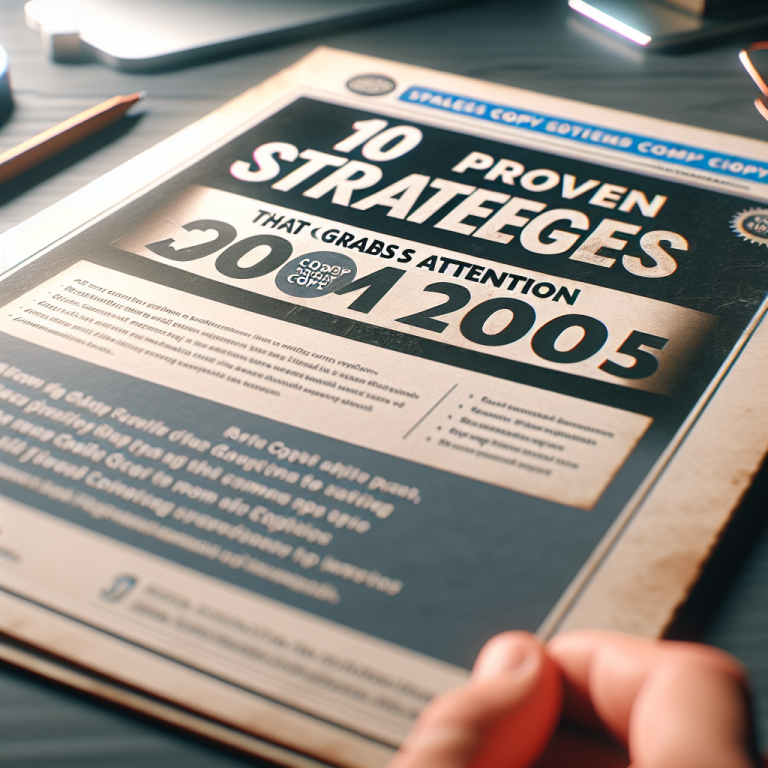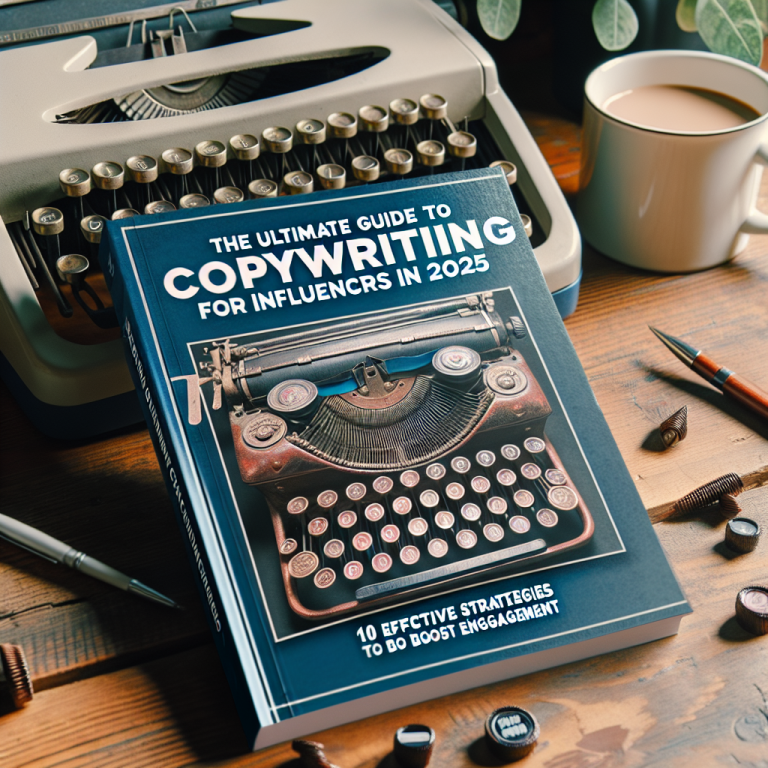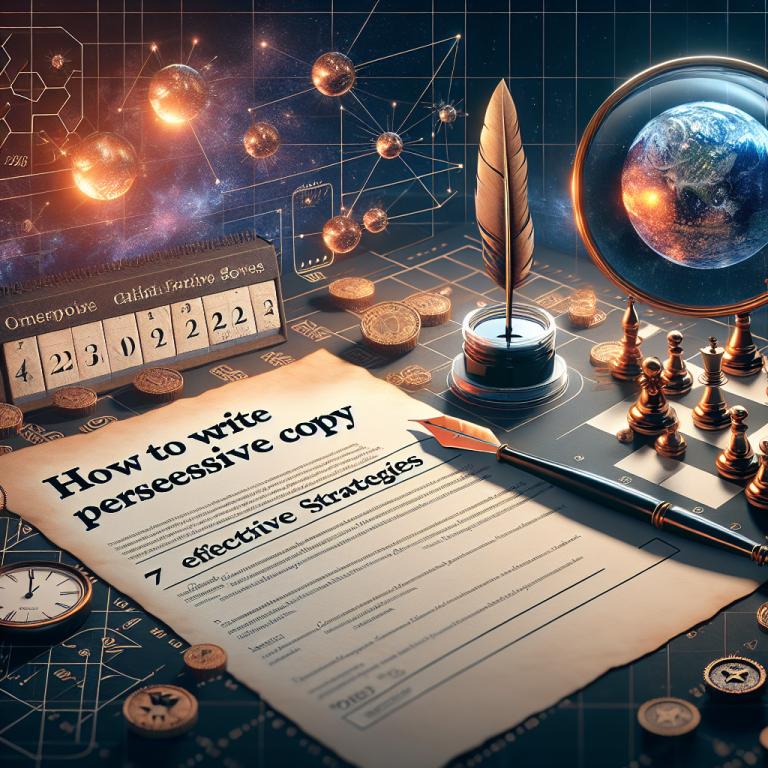The Ultimate Guide to NLP in Copywriting: 7 Effective Strategies for 2025
Table of Contents
- 1. Understanding NLP in Copywriting
- 2. Using Anchoring Techniques
- 3. Incorporating Language Patterns
- 4. Crafting Persuasive Headlines with NLP
- 5. Leveraging NLP for Emotional Engagement
- 6. Applying Temporal Language for Urgency
- 7. Testing and Refining Your NLP Strategies
1. Understanding NLP in Copywriting
What is NLP and Why Is It Crucial for Copywriters?
Neuro-Linguistic Programming, or NLP, is a psychological approach that explores how language influences our brain and behavior. In the realm of copywriting, NLP in copywriting involves applying specific language techniques to persuade, motivate, and connect with audiences on a deeper level. As we move into 2025, understanding NLPâs fundamentals has become essential for crafting compelling copy that drives action.
Many successful marketers and copywriters use NLP principles to tailor their messages effectively. For instance, knowing how to mirror a prospectâs language or tap into their subconscious can significantly increase conversion rates. Data from recent studies show that copy leveraging NLP techniques can boost engagement by up to 30% compared to traditional methods.
To harness NLP in copywriting effectively, itâs vital to grasp core concepts like sensory language, patterns of influence, and subconscious triggers. This foundational knowledge allows you to craft messages that resonate, persuade, and ultimately convert in the competitive landscape of 2025.
Key Components of NLP in Copywriting
NLP in copywriting typically involves understanding and utilizing language patterns, framing, and anchoring. These components work together to influence subconscious decision-making processes, making your copy more persuasive. For example, carefully choosing words that activate visual or kinesthetic senses can make your message more vivid and memorable.
Practicing these components requires both study and experimentation. Successful copywriters often test different phrases or emotional triggers to see which resonate most with their audience. In 2025, incorporating data-driven insights into NLP strategies is the new norm for maximizing output effectiveness.
By mastering these key components, you set a firm foundation for creating persuasive, influential copy that leverages the power of language psychology in todayâs digital landscape.
2. Using Anchoring Techniques
What Is Anchoring in NLP and How Can It Boost Your Copy?
Anchoring in NLP refers to associating a specific stimulusâsuch as a word, phrase, or imageâwith a particular emotional state or response. In copywriting, anchoring helps you evoke desired feelings, like trust, excitement, or urgency, to guide your audience toward a conversion.
Imagine using a phrase like âImagine yourself finally achieving your goalâ consistently alongside uplifting imagery. Over time, this phrase becomes an anchor that triggers positive emotions whenever your reader encounters it. This emotional association can significantly influence their purchasing decisions.
By strategically placing anchors throughout your copy, you can subconsciously influence your audienceâs behavior. This technique is especially powerful when combined with persuasive storytelling and vivid language. In 2025, mastering anchoring with digital tools and data insights can give your copy an edge over competitors.
Practical Tips for Implementing Anchoring
Start by identifying the core emotions you want to inspireâtrust, excitement, or relief, for exampleâand develop consistent phrases or images that evoke these feelings. Use these anchors throughout your sales pages, emails, or ads to reinforce positive associations.
Next, test different anchors with split testing to measure their effectiveness. For instance, see how variations of your keywords influence engagement and adjust accordingly. Remember, the key to successful anchoring is consistency combined with emotional intensity.
Finally, leverage tools like heatmaps and engagement metrics to refine your anchoring techniques based on real user responses. In 2025, sophisticated analytics will enable copywriters to optimize their anchoring strategies in real-time, ensuring maximum impact.
3. Incorporating Language Patterns
Common NLP Language Patterns for Persuasive Copy
Language patterns are structured phrases designed to guide the readerâs subconscious toward a specific response. Popular patterns include the Milton Model, embedded commands, and meta-model questions that clarify or challenge limiting beliefs.
For example, embedded commands like âImagine how easy it is to succeed with our solutionâ subtly influence the subconscious, making the reader more receptive. Using these patterns in your copy in 2025 allows for a seamless flow of influence without overt persuasion.
Research indicates that combining multiple language patterns in a single piece increases the likelihood of engagement and conversion. When used ethically and skillfully, NLP language patterns can turn bland copy into a compelling narrative that resonates deeply.
Applying Language Patterns Ethically
While NLP offers powerful tools for persuasion, itâs vital to maintain authenticity and transparency. Ethical use of language patterns builds trust and long-term customer relationships.
Always tailor your language patterns to suit your audienceâs values and needs. Overusing or misapplying these patterns can backfire, leading to skepticism or distrust, especially in 2025âs discerning market environment.
Invest in training or courses that emphasize ethical NLP application to ensure your copy maintains integrity while still being highly persuasive.
4. Crafting Persuasive Headlines with NLP
The Art of Attention-Grabbing Headlines
Your headline is the first impression and a prime opportunity to leverage NLP in copywriting. Using specific words, emotional triggers, and sensory language can immediately capture attention. For example, incorporating words like âDiscover,â âUnlock,â or âTransformâ energizes your headline and hints at a benefit.
Research from 2025 marketing trends shows that headlines containing curiosity and urgency drive higher click-through rates. Applying NLP techniques like using embedded commands or sensory-rich language makes your headlines more compelling and persuasive from the first glance.
Test different headline structures using A/B split tests to determine which NLP strategies resonate most with your audience. Remember, a powerful headline sets the stage for the entire persuasive journey.
Examples of Effective NLP-Enhanced Headlines
- “Unlock the Secrets to Doubling Your Sales Today”
- “Imagine Feeling Confident Every Day â Here’s How”
- “Transform Your Business with This Simple Strategy”
5. Leveraging NLP for Emotional Engagement
Connecting Deeply with Your Audience
Emotion drives decision-making, and NLP in copywriting provides the tools to tap into those emotions effectively. Using sensory language, storytelling, and indirect suggestions can evoke feelings like joy, security, or fearâthe triggers that motivate action.
For example, describing a scenario vividly allows your audience to imagine themselves experiencing the benefits. In 2025, integrating data analytics helps identify the emotional drivers specific to your target market, making your copy more relevant and impactful.
Armed with this knowledge, craft stories and messages that align the readerâs emotional state with your desired outcome. Doing so fosters trust, loyalty, and an increased likelihood of conversions.
Practical Emotional Triggers
- Desire and Aspiration: Use language that paints a picture of success.
- Fear of Missing Out: Leverage urgency and scarcity.
- Security and Trust: Highlight safety, guarantees, and credibility.
6. Applying Temporal Language for Urgency
Creating a Sense of Urgency with Time-Based Triggers
Using temporal languageâwords that reference timeâcan significantly heighten the urgency in your copy. Phrases like âlimited time,â âtoday,â and âbefore it’s too lateâ activate the readerâs subconscious sense of immediacy.
In 2025, combining temporal triggers with personalized and dynamic content allows you to craft highly effective calls to action. For example, countdown timers and time-sensitive offers backed by NLP techniques amplify the perception of scarcity and urgency.
Implementing this strategy requires careful balance, so it doesnât come across as manipulative. Ethical tactics include providing real limited-time offers and transparent deadlines to build trust and increase conversions.
Best Practices for Temporal Language
- Use clear, specific deadlines rather than vague timeframes.
- Combine temporal language with emotional and social proof.
- Test different phrases and timing to optimize response rates.
7. Testing and Refining Your NLP Strategies
Data-Driven Optimization
Constant testing is crucial to ensure your NLP in copywriting strategies work effectively. Use A/B testing, heatmaps, and analytics to track engagement and conversions, making data-driven adjustments for maximum impact.
In 2025, AI-powered tools can analyze user responses at a granular level, providing insights into subconscious triggers that resonate most. Incorporate these findings to refine your copy continually.
Remember, what works for one audience or product might not work for another. Regularly updating your NLP techniques based on new insights keeps your messaging fresh and effective.
Feedback and Iteration
Gather feedback from your audience through surveys, comments, and engagement metrics. This direct feedback helps you understand emotional responses and identify areas for improvement.
Iterate your copy based on this feedback with small, incremental changes to test their impact. Over time, this iterative process leads to highly optimized NLP-driven copy that converts effectively in 2025.
Conclusion
Mastering NLP in copywriting is more relevant than ever in 2025. The strategic application of language patterns, emotional triggers, anchoring, and urgency techniques empowers marketers and copywriters to craft persuasive messages that resonate deeply. By continuously testing and refining your NLP strategies, you ensure your copy remains impactful in an evolving digital landscape. Remember, the true power of NLP in copywriting lies in authenticity and understanding your audienceâs subconscious mind. With these seven strategies, youâre well-equipped to elevate your copy and achieve outstanding results this year and beyond.
Frequently Asked Questions
1. What is NLP in copywriting?
NLP in copywriting refers to using Neuro-Linguistic Programming techniques to craft persuasive, emotionally engaging messages that influence subconscious decision-making. It involves language patterns, anchoring, and sensory triggers to boost conversions.
2. How can I start using NLP in my copywriting?
Begin by learning basic NLP concepts such as language patterns, anchoring, and emotional triggers. Practice incorporating these techniques into your writing, and test their effectiveness through A/B testing to refine your approach.
3. Is NLP ethical in copywriting?
Yes, when used ethically, NLP techniques enhance communication and persuasion without manipulation. Always prioritize honesty and transparency to maintain consumer trust.
4. What are the most effective NLP strategies for 2025?
In 2025, the most effective strategies include combining data-driven insights with NLP techniques like emotional storytelling, anchoring, crafting compelling headlines, and creating urgency through temporal language.
5. How can I measure the success of NLP in copywriting?
You can measure success through engagement metrics, conversion rates, and A/B testing results. Leveraging analytics tools helps you evaluate which NLP techniques resonate most with your audience.








